About Feng Shui
![]() We offen hear the question: "What is Feng Shui?". The few that have heard of Feng Shui (pronounced fung shway) only think of its esoteric type that was very popular in the West in the 90ies, but little do they know what is actually behind the whole system of Feng Shui.
We offen hear the question: "What is Feng Shui?". The few that have heard of Feng Shui (pronounced fung shway) only think of its esoteric type that was very popular in the West in the 90ies, but little do they know what is actually behind the whole system of Feng Shui.
Feng Shui is a Chinese system of balancing our physical environment to promote harmony and a sense of well-being. Through very detailed observations of nature around us, the Chinese created various concepts to make use of what they learned. One is the system of Feng Shui.
It is applied from a home’s natural surroundings down to its furnishings and decor. It can start with finding a suitable property first and planning a whole estate down to modifying apartments and single rooms.
We believe that everything (and everyone) is affected by a life force we call energy, or "chi" (Chinese) / "ki" (Japanese). How we arrange objects, work with colours and materials will affect our lives and how we interact with our surroundings. Based on the three-fold idea that man (human kind) is in the center between heaven and earth (a concept called "San Cai"), we make our best efforts to harmonize both the heaven and earth energies and make the best use of their potentials for our life and us personally.
Feng Shui gives us the opportunity to work with the potentials of creating wealth and health and enhance our careers and relationships. We believe this is a great start... Why don't you start applying its methods today?
The I Ching (Yijing) - the Book of Change
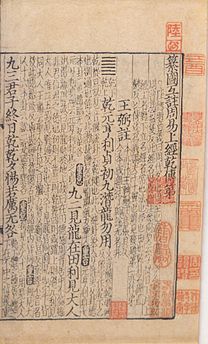
The I Ching, "Yijing(易经)", Classic of Changes or Book of Changes; also called "Zhouyi(周易)", The changes of the Zhou, is one of the oldest of the Chinese classic texts. The book is a symbol system used to identify order in random events. The text describes an ancient system of cosmology and philosophy that is intrinsic to ancient Chinese cultural beliefs. The cosmology centres on the ideas of the dynamic balance of opposites, the evolution of events as a process, and acceptance of the inevitability of change.
The Book of Changes is the most commented book of the old classics, said to be a composition of the mythical ruler Fuxi 伏羲, King Wen of Zhou 周文王, Duke Dan of Zhou 周公旦 and even Confucius. But instead, we can divide the text in the "original" listing of the 64 hexagrams and their respective line statements and the later "wing" commentaries. The main part with the listings can also be called "Changes of the Zhou", because it is the Zhou people's manual for the divination with milfoil stalks (shi 蓍). The former dynasty, the Shang 商, instead used heat crackings on oracle bones to divine. Its modern shape is very near to the original that must have been composed during the late Western Zhou Dynasty 西周.
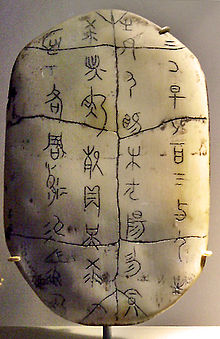
Each of the hexagrams is composed of two of the Eight Trigrams (bagua 八卦). Each hexagram is named after its main fortune character, commented by a short statement (guaci 卦辭). Every single line of it, broken or solid (called "six" liu 六 and "nine" jiu 九 or "female" yin 陰 and "male" yang 陽), is commented by a line statement (yaoci 爻辭). The statements begin from bottom to top, counting as "beginning" (chu 初), two, three, four, five and "upper" (shang 上). The sequence of the 64 Hexagrams was not always the same. The commentary is very abstract and made room for occult prognostication, numerological and cosmological speculation and political and moral philosophizing during the Han Dynasty 漢 and the Song Dynasty 宋.
The ten "Wing Commentaries" (Shiyi 十翼) are products of the Han Dynasty and interprete the hexagram and its statements in a lexicological, symbolistic and philosophical way.
The important commentaries are that of Han time Kong Yingda 孔穎達, the Tang period 唐 scholar Lu Deming 陸德明 and the Song Dynasty Neo-Confucian Zhu Xi 朱熹. Still the best western translation is that of James Legge and the German one by Richard Wilhelm.
The Eight Trigrams (Bagua 八卦) are:
Qian 乾 (the Creative; Heaven)
Kun 坤 (the Receptive; Earth)
Kan 坎 (the Perilous Pit; Water)
Li 離 (the Clinging; Fire)
Zhen 震 (Exciting Power; Thunder)
Gen 艮 (Arresting Movement; Mountain)
Xun 巽 (Gentle Penetration; Wind)
Dui 兌 (Joy and Pleasure; Swamp)

The 64 Hexagrams:
First series 上經1 乾 Qian The Creative
2 坤 Kun The Receptive,Resting in Firmness
3 屯 Tun Initial Difficulty
4 蒙 Meng Youthful Folly, Obscurity
5 需 Xu Waiting, Nourishment
6 訟 Song Conflict
7 師 Shi The Army, Group Action
8 比 BiHolding Together, Union
9 小畜 Xiaoxu The Taming Force, Small Restraint
10 履 Lü Treading Carefully
11 泰 Tai Peace
12 否 Pi Stagnation
13 同人 Tongren Union of Men
14 大有 Dayou Great Possession, Abundance
15 謙 Qian Modesty
16 豫 Yu Harmony, Joy, Enthusiasm
17 隨 Sui Following
18 蠱 Gu Arresting Decay
19 臨 Lin Approach, Advance
20 觀 Guan Contemplation
21 噬嗑 Shihe Biting Through
22 賁 Bi Adornment
23 剝 Bo Falling Apart
24 複 Fu Returning
25 無妄 Wuwang Correctness, Innocence
26 大畜 Daxu The Great Taming Force
27 頤 Yi Correctness, Innocence
28 大過 Daguo Excess
29 坎 Kan The Perilous Pit
30 離 Li The Clinging; Brightness
Second series 下經
31 咸 Xian Influence
32 恆 Heng Preseverance, Duration
33 遯 Dun Retreat
34 大壯 Dazhuang The Power of the Great
35 晉 Jin Progress
36 明夷 Mingyi Darkening of the Light; Intelligence Wounded
37 家人 Jiaren The Family
38 睽 Kui Disunion, Mutual Alienation
39 蹇 Jian Arresting Movement
40 解 Jie Removing Obstacles
41 損 Sun Decrease
42 益 Yi Increase
43 夬 Guai Removing Obstruction, Breaking Through
44 姤 Gou Encountring
45 萃 Cui Gathering Together
46 升 Sheng Ascending
47 困 Kun Oppression
48 井 Jing A Well
49 革 Ge Revolution
50 鼎 Ding The Cauldron
51 震 Zhen Thunder, Exciting Power
52 艮 Gen Mountain, Arresting Movement
53 漸 Jian Gradual Progress, Growth
54 歸妹 Guimei The Marrying Maiden; Propriety
55 豐 Feng Abundance, Prosperity
56 旅 Lü Traveling Stranger
57 巽 Xun Gentle Penetration
58 兌 Dui Joy, Pleasure
59 渙 Huan Dispersion
60 節 Jie Regulation, Restraining
61 中孚 Zhongfu Inmost Sincerity
62 小過 Xiaoguo Small Excesses
63 既濟 Jiji Completion
64 未濟 Weiji Before Completion

|
This article is based on the article Yijing from the free encyclopedia Wikipedia and it licensed under the double licence of GNU Free Documentation License und Creative Commons CC-BY-SA 3.0 Unported. On Wikipedia a list of authors for this article is available. This article has been adjusted and extended for the use on this website. |
What is BaZi?
The origin of BaZi is attributed to Scholar Li Xuzhong of the Tang Dynasty (A.D 618-907). It was practiced by Xu Ziping in the Song Dynasty (A.D 960-1279). This ancient Chinese Art is derived from the text of the I-Ching (YiJing) or the Book of Changes used for fortune telling. It is based on the same principles, using the 5 primordial elements for fortune telling.
The Chinese believe that the universe came into being from the 5 primordial elements: Wood, Fire, Earth, Metal and Water.
 The system is based on the 12 stages of the life cycle and the interrelationship of the constructive and destructive cycles of the 5 elements. As a fortune-telling system, BaZi is still widely used today as it was before. Whilst other methods of fortune telling are based on the celestial formations such as the planets and the stars in the galaxies, BaZi as a fortune-telling system is based on the movement of the solar system. Even as the planets course around the sun, it is known that human existence is powerfully shaped by the rising and the setting sun. The solar system has an abiding influence on all living beings.
The system is based on the 12 stages of the life cycle and the interrelationship of the constructive and destructive cycles of the 5 elements. As a fortune-telling system, BaZi is still widely used today as it was before. Whilst other methods of fortune telling are based on the celestial formations such as the planets and the stars in the galaxies, BaZi as a fortune-telling system is based on the movement of the solar system. Even as the planets course around the sun, it is known that human existence is powerfully shaped by the rising and the setting sun. The solar system has an abiding influence on all living beings.
BaZi analyzes the unique numerals of an individual's birth data and gender then matches them to a matrix of metaphysical knowledge based on the Sun and its elemental influences on him/her. Therein lays the fate and destiny of an individual, in the realms of BaZi.
This method uses the 5 basic elements, e.g., wood, fire, earth, metal and water to represent one's Four Pillars of Destiny.
Here is a number of important ideas;
- The 4 Pillars are allocated into the Year, Month, Day and Hour. Each pillar is represented by an element, as translated from one's birth data.
- Each pillar consists of the Heavenly Stem and the Earthly Branch.
- The self-element is represented by the Day pillar of the Heavenly Stem and it is employed as a reference point in its inter-relationships with the other seven elements in the 4 Pillars for reading one's destiny.
 This system maps out the 12 stages of the life cycle in a person's life to reveal the strengths of the SELF-element within this framework. This forms the basis for a precise interpretation and an accurate forecast of a person's destiny. BaZi interpretation encompasses the various aspects of one's life and the forecast of his or her future is also based on influence of the ruling element of his luck pillar, year, month and hour.
This system maps out the 12 stages of the life cycle in a person's life to reveal the strengths of the SELF-element within this framework. This forms the basis for a precise interpretation and an accurate forecast of a person's destiny. BaZi interpretation encompasses the various aspects of one's life and the forecast of his or her future is also based on influence of the ruling element of his luck pillar, year, month and hour.
BaZi is reputed to be the most accurate fortune-telling system there is. Under BaZi, the probability for two persons having an identical reading is 1 in 12.96 million. And it will take another 240 years to repeat the next cycle to raise another identical case. BaZi is known not only on its accuracy, but also its ease of application in all aspects of one's life. Those who seek the wisdom of BaZi can testify to its accuracy and usefulness.
Here is what can be ascertained with the information derived from a person’s BaZi:
- Characteristics and talents
- Family relationships with his/her parents and siblings
- Quality of spousal relationship
- Children and their well-being, best career path
- The ability to amass, accumulate, manage and/or to save wealth
- Taking action for the best outcome/making life decisions
- Physical conditions and common illnesses
- Issues that are created by him or herself
- Judgment and relationships with his community and friends
- Relationship with superiors and subordinates
- Best capabilities at work/how you work in a team
- Best times to invest and outlook on challenging times
{jshop-prod-ins:2}
Other names and terms for Feng Shui
Feng Shui is a modernized term for the ancient art and over time other terms have been used. When working with the Feng Shui classics - the ancient writings on Feng Shui - we might - besides using the term "Kanyu" come across any of these terms:
Xiang Zhai
 Early Qin period refers to siting as Xiang Zhai. Zhai is a dwelling place.
Early Qin period refers to siting as Xiang Zhai. Zhai is a dwelling place.
Zhai originally means a dwelling for the living. Dead people also need a place to safely rest and “sleep”, therefore, Zhai also refers to the grave site of dead people.
The art of Xiang Zhai includes both places of dwelling for the living and graves for the dead. The former is termed Yang Zhai and the latter Yin Zhai. The two are similar in that both deal with people and sites for them. After determining the site (Xiang Di), a place of rest is built. The difference is that one is for the living, the other for the dead.
Xiang Di
Although Xiang Di is often used interchangeably with Feng Shui, there are differences between them:
The idea of Xiang Di came about long before Feng Shui. In primitive society, Xiang Di came into practice because of the need to look for raw material and a safe and comfortable place to live in. People wander around seeking the best locations for settlements. They had to study the landform and the movements of water sources, as well as observing changes in vegetation and soil types. This is called Xiang Di, Feng Shui came about much later.
Xiang Di includes aspects of agriculture and hunting to the building of cities, dwellings, travel and warfare. All these require the study of Xiang Di. On the other hand, Feng Shui is restricted to dwellings and gravesites.
The Origin of Bazhai Feng Shui (Eight Houses Feng Shui)
Taken from “A Guide to Reading the Bazhai Ming Jing (The Bright Mirror of Bazhai)”, written by Jiang Jue-Ming, 1997. Translated by Howard Choy.
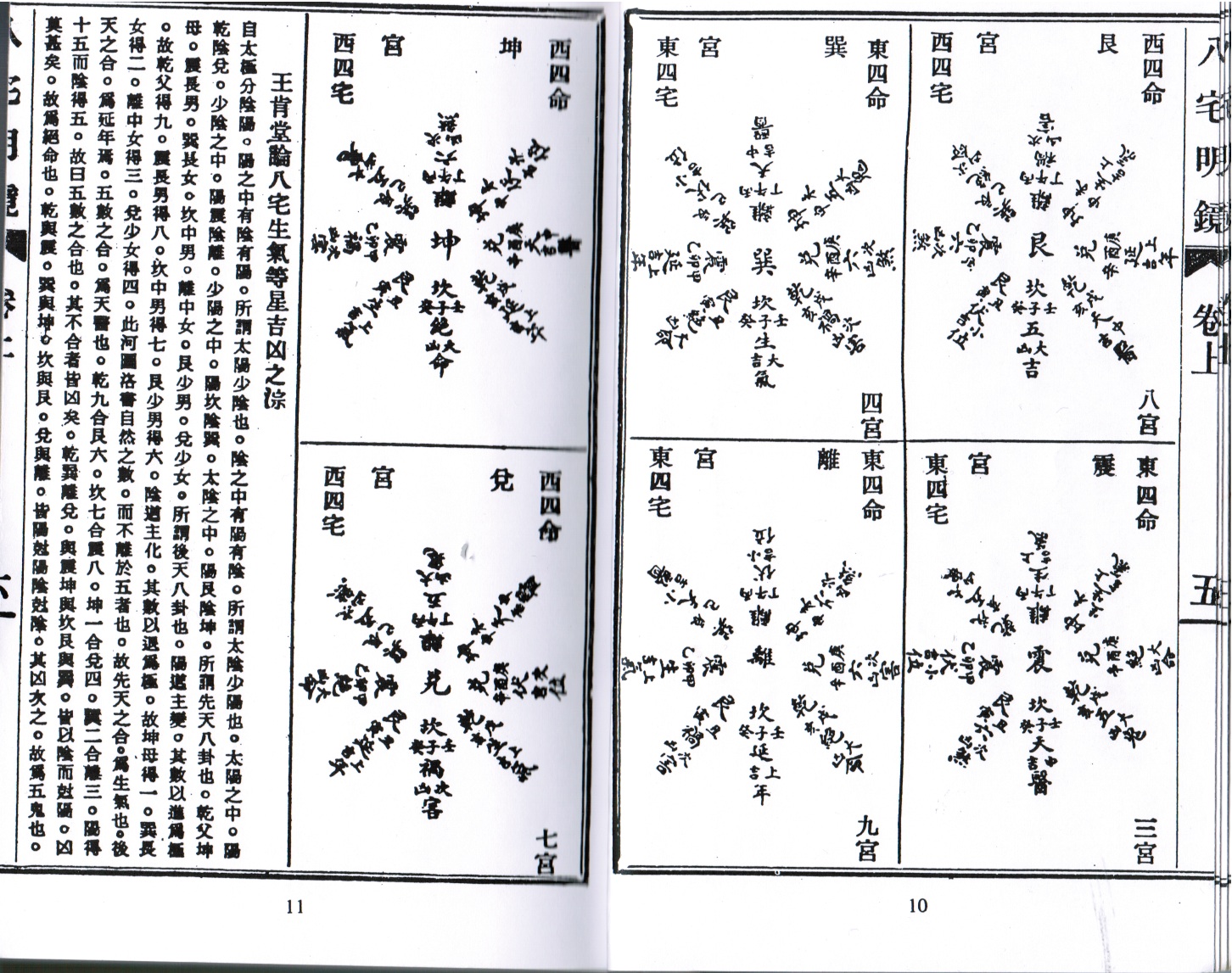 Chinese Kanyu Dili (Feng Shui) was mainly concerned with the study of Yin and Yang Houses. The Yin Houses (graves) emphasised on predicting the fortune and decline of a deceased’s family and the Yang Houses (residence) emphasised on analysing the fortune and decline of the Living. Kanyu is intimately related to our lives. It is one of the five important inventions by the Chinese.
Chinese Kanyu Dili (Feng Shui) was mainly concerned with the study of Yin and Yang Houses. The Yin Houses (graves) emphasised on predicting the fortune and decline of a deceased’s family and the Yang Houses (residence) emphasised on analysing the fortune and decline of the Living. Kanyu is intimately related to our lives. It is one of the five important inventions by the Chinese.
Kanyu of Yin and Yang Houses has produced many schools after thousands of years of development, and the Bazhai School is one of the more important schools. It has its beginnings in the Tang Dynasty (618-907) and became popular in the Song Dynasty (960-1279).
Three representative books on Bazhai were mentioned in the “History of the Song Dynasty”; they were: -
- “Huang-di Bazhai Jing -- The Yellow Emperor’s Classic of Bazhai.
- “Huai-nan-wang Jianji Bazhai Jing” -- The Classic of Bazhai According to the King of Southern Huai (Jiangsu).
- “Huang-shi-gong Bazhai” -- The Bazhai of Old Man Yellow Stone.
Since the word Bazhai was mentioned in all 3 classics, the ‘Bazhai School’ was known from then on.
After the Song Dynasty, the school continued to prosper and became quite popular. During the Ming (1368-1644) and the Qing (1644-1911) Dynasties, many more books on Bazhai appeared.
They included:
- “Yang Zhai Cuo-Yao” -- Yang Houses Abstract.
- “Yang-zhai Da-Cheng” -- The Great Achievements of Yang Houses
- “Jin-guang-Dou-Lin Jing” -- Classic of the Dipper Casting its Golden Light
- “Yang-Zhai Shi-Shu” -- The Ten Books of Yang Houses
- “Yang-Zhai Ji-Cheng” -- The Complete Anthology of Yang Houses
- “Yang-Zhai San-Yao” -- The Three Requirements of Yang Houses
- “Bazhai Ming-Jing” -- The Bright Mirror of Eight Houses
- “Yang-Zhai Ai-Yiang Pian” -- A Companion for Yang Houses
Up until now, Bazhai is still considered by many overseas Chinese as an authentic school of Kanyu.
What is Bazhai
Bazhai (or Eight Houses) is in reality the eight directions, which are related to the Nine Stars (of the Big Dipper), the Nine Palaces (of the Luoshu Diagram) and the Bagua (the Eight Trigrams). It is part of Yang House Kanyu.
The directions and the auspiciousness of the East Four and the West Four life are related to the Bagua, which can be traced back to popularity of the Yi Pictures Study in the Song Dynasty.
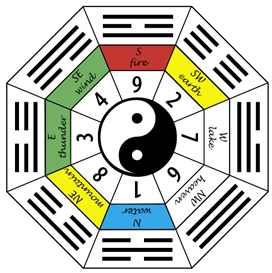 The diagrams of the Hetu, the Luoshu, the Xiantian (Earlier Heaven) and Huotian (Later Heaven) Bagua were passed down by Huashan Haoist Chen Tuan during the Song Dynasty. Later on, they were transmitted through Shao Yong in his book “Huang-ji Jing-shi” (The Empirical YiJing), Zhou Din-Yi’s “Taiji Tu Shuo” (An Explanation of the Taiji Pictures) and Zhu Xi’s “Zhou-Yi Ben-Yi” (The Original Meaning of Zhou-Yi). Nowadays, the Yijing Bagua is a household name.
The diagrams of the Hetu, the Luoshu, the Xiantian (Earlier Heaven) and Huotian (Later Heaven) Bagua were passed down by Huashan Haoist Chen Tuan during the Song Dynasty. Later on, they were transmitted through Shao Yong in his book “Huang-ji Jing-shi” (The Empirical YiJing), Zhou Din-Yi’s “Taiji Tu Shuo” (An Explanation of the Taiji Pictures) and Zhu Xi’s “Zhou-Yi Ben-Yi” (The Original Meaning of Zhou-Yi). Nowadays, the Yijing Bagua is a household name.
Zhu Xi’s “Zhou-Yi Ben-Yi” has the Fuzi and the Wen Wang Bagua arrangements in his classic. The Fuzi Bagua (Earlier Heaven Bagua) is made up of the Taiji dividing into the Yin Yang polarity (Lian Yi), which further divided into the Sixiang of Tai Yang, Xiao Yang, Tai Yin and Xiao Yin.
The Yang House (Bazhai) method grouped the four gua belonging to Tai Yang and Tai Yin into the West Four Life (Xi-Si-Ming) and the four gua belonging to the Xiao Yang and Xiao Yin to the East Four Life (Dong-Si-Ming, see diagram at end of article). It then used the Wen Wang (Later Heaven) Bagua to set the directions for the East Four and the West Four Life. By comparing them to the Nine Stars, they assigned Auspiciousness and Harmfulness to the orientations.
Bazhai Feng Shui is also called Yi Gua (Yijing Trigram) Feng Shui. These days, it is one of the more popular Liqi (compass) schools. Some people think Bazhai Feng Shui is too simple, since, in principle, it divides the house and people into two categories. If the house and people fit in with each other, then it is auspicious, if they don’t then it is harmful. This is the most basic dictum. However, if we study the subject deeply, we will find Bazhai Kanyu has more depth than first realised. Of course, establishing the auspiciousness and the harmfulness of a situation are the main characteristics of Bazhai Kanyu.
“Bazhai Ming Jing” (The Bright Mirror of Eight Houses) was passed down by Daoist Monk Ruo-Guan Daoren. It is a representative work of knowledge transmitted by Yang Jun-Song of the Tang Dynasty. Although Ruo-Guan Daoren has no real name, and we don’t know his age or birth details, we know his book was first published by “Xu Jiang Diao Sou” (The Old Fisherman of Xu River) Gu Wa-lu in the 55th year of the Reign of Emperor Qian Long (1791). In the last 300 years, it has become a must-read book for those who want to study Kanyu seriously.
{jshop-prod-ins:4}
The Origin of Bazhai Feng Shui (Eight Houses Feng Shui)
Taken from “A Guide to Reading the Bazhai Ming Jing (The Bright Mirror of Bazhai)”, written by Jiang Jue-Ming, 1997. Translated by Howard Choy.
 Chinese Kanyu Dili (Feng Shui) was mainly concerned with the study of Yin and Yang Houses. The Yin Houses (graves) emphasised on predicting the fortune and decline of a deceased’s family and the Yang Houses (residence) emphasised on analysing the fortune and decline of the Living. Kanyu is intimately related to our lives. It is one of the five important inventions by the Chinese.
Chinese Kanyu Dili (Feng Shui) was mainly concerned with the study of Yin and Yang Houses. The Yin Houses (graves) emphasised on predicting the fortune and decline of a deceased’s family and the Yang Houses (residence) emphasised on analysing the fortune and decline of the Living. Kanyu is intimately related to our lives. It is one of the five important inventions by the Chinese.
Kanyu of Yin and Yang Houses has produced many schools after thousands of years of development, and the Bazhai School is one of the more important schools. It has its beginnings in the Tang Dynasty (618-907) and became popular in the Song Dynasty (960-1279).
Three representative books on Bazhai were mentioned in the “History of the Song Dynasty”; they were: -
- “Huang-di Bazhai Jing -- The Yellow Emperor’s Classic of Bazhai.
- “Huai-nan-wang Jianji Bazhai Jing” -- The Classic of Bazhai According to the King of Southern Huai (Jiangsu).
- “Huang-shi-gong Bazhai” -- The Bazhai of Old Man Yellow Stone.
Since the word Bazhai was mentioned in all 3 classics, the ‘Bazhai School’ was known from then on.
After the Song Dynasty, the school continued to prosper and became quite popular. During the Ming (1368-1644) and the Qing (1644-1911) Dynasties, many more books on Bazhai appeared.
They included:
- “Yang Zhai Cuo-Yao” -- Yang Houses Abstract.
- “Yang-zhai Da-Cheng” -- The Great Achievements of Yang Houses
- “Jin-guang-Dou-Lin Jing” -- Classic of the Dipper Casting its Golden Light
- “Yang-Zhai Shi-Shu” -- The Ten Books of Yang Houses
- “Yang-Zhai Ji-Cheng” -- The Complete Anthology of Yang Houses
- “Yang-Zhai San-Yao” -- The Three Requirements of Yang Houses
- “Bazhai Ming-Jing” -- The Bright Mirror of Eight Houses
- “Yang-Zhai Ai-Yiang Pian” -- A Companion for Yang Houses
Up until now, Bazhai is still considered by many overseas Chinese as an authentic school of Kanyu.
What is Bazhai
Bazhai (or Eight Houses) is in reality the eight directions, which are related to the Nine Stars (of the Big Dipper), the Nine Palaces (of the Luoshu Diagram) and the Bagua (the Eight Trigrams). It is part of Yang House Kanyu.
The directions and the auspiciousness of the East Four and the West Four life are related to the Bagua, which can be traced back to popularity of the Yi Pictures Study in the Song Dynasty.
 The diagrams of the Hetu, the Luoshu, the Xiantian (Earlier Heaven) and Huotian (Later Heaven) Bagua were passed down by Huashan Haoist Chen Tuan during the Song Dynasty. Later on, they were transmitted through Shao Yong in his book “Huang-ji Jing-shi” (The Empirical YiJing), Zhou Din-Yi’s “Taiji Tu Shuo” (An Explanation of the Taiji Pictures) and Zhu Xi’s “Zhou-Yi Ben-Yi” (The Original Meaning of Zhou-Yi). Nowadays, the Yijing Bagua is a household name.
The diagrams of the Hetu, the Luoshu, the Xiantian (Earlier Heaven) and Huotian (Later Heaven) Bagua were passed down by Huashan Haoist Chen Tuan during the Song Dynasty. Later on, they were transmitted through Shao Yong in his book “Huang-ji Jing-shi” (The Empirical YiJing), Zhou Din-Yi’s “Taiji Tu Shuo” (An Explanation of the Taiji Pictures) and Zhu Xi’s “Zhou-Yi Ben-Yi” (The Original Meaning of Zhou-Yi). Nowadays, the Yijing Bagua is a household name.
Zhu Xi’s “Zhou-Yi Ben-Yi” has the Fuzi and the Wen Wang Bagua arrangements in his classic. The Fuzi Bagua (Earlier Heaven Bagua) is made up of the Taiji dividing into the Yin Yang polarity (Lian Yi), which further divided into the Sixiang of Tai Yang, Xiao Yang, Tai Yin and Xiao Yin.
The Yang House (Bazhai) method grouped the four gua belonging to Tai Yang and Tai Yin into the West Four Life (Xi-Si-Ming) and the four gua belonging to the Xiao Yang and Xiao Yin to the East Four Life (Dong-Si-Ming, see diagram at end of article). It then used the Wen Wang (Later Heaven) Bagua to set the directions for the East Four and the West Four Life. By comparing them to the Nine Stars, they assigned Auspiciousness and Harmfulness to the orientations.
Bazhai Feng Shui is also called Yi Gua (Yijing Trigram) Feng Shui. These days, it is one of the more popular Liqi (compass) schools. Some people think Bazhai Feng Shui is too simple, since, in principle, it divides the house and people into two categories. If the house and people fit in with each other, then it is auspicious, if they don’t then it is harmful. This is the most basic dictum. However, if we study the subject deeply, we will find Bazhai Kanyu has more depth than first realised. Of course, establishing the auspiciousness and the harmfulness of a situation are the main characteristics of Bazhai Kanyu.
“Bazhai Ming Jing” (The Bright Mirror of Eight Houses) was passed down by Daoist Monk Ruo-Guan Daoren. It is a representative work of knowledge transmitted by Yang Jun-Song of the Tang Dynasty. Although Ruo-Guan Daoren has no real name, and we don’t know his age or birth details, we know his book was first published by “Xu Jiang Diao Sou” (The Old Fisherman of Xu River) Gu Wa-lu in the 55th year of the Reign of Emperor Qian Long (1791). In the last 300 years, it has become a must-read book for those who want to study Kanyu seriously.
{jshop-prod-ins:4}
History of Flying Stars Feng Shui (Xuan Kong Fei-Xing)
The history of Flying Stars Feng Shui
There are boundless myths surrounding the feng shui method of flying stars. Many different schools fight each other about the one ultimate true method. Following the principle "thou shall not divulge the secrets of Heaven" the feng shui method of flying stars has been kept a secret until the early 20th century. It was then, that the first book was published.
What exactly do we know historically about the Feng Shui Method of Flying Stars?
The History
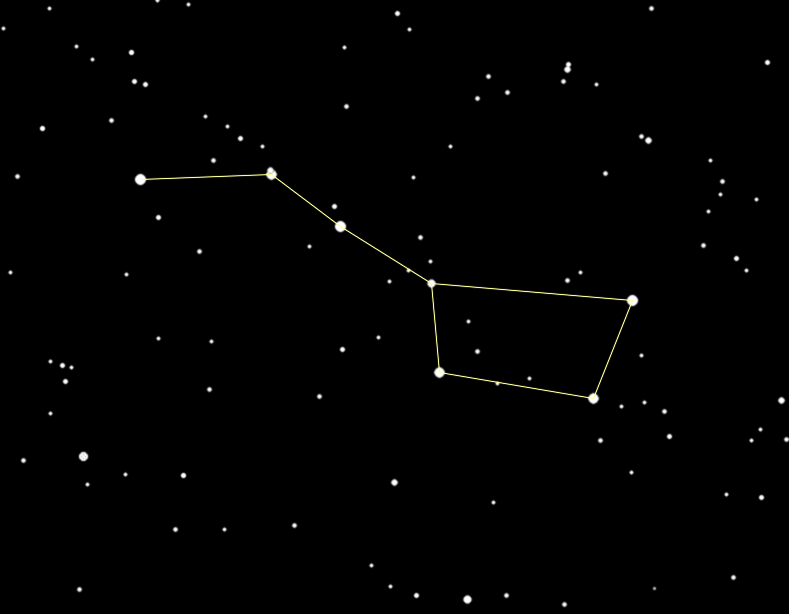 Xuan Kong Pai means "School of the mysterious Emptiness" or simply "Mysterious Void School" and even today suggests a form of Feng Shui legendized in many forms - many of which are only just being rediscovered or will be rediscovered in the future. "Xuan Kong" actually means "space" (an enigma) and "time" (emptiness).
Xuan Kong Pai means "School of the mysterious Emptiness" or simply "Mysterious Void School" and even today suggests a form of Feng Shui legendized in many forms - many of which are only just being rediscovered or will be rediscovered in the future. "Xuan Kong" actually means "space" (an enigma) and "time" (emptiness).In a book written by Geng Wen-Shan during the Tang Dynasty (618-907AD) "Qing Nang Xu" (Preface of the classic "Azure Bag") it is mentioned that Guo Pu (276-324) started learning the art of Xuan Kong during the Jin Dynasty.
By the time of the Tang Dynasty, Yang Jun-Song had mentioned in his book “Qing-Nang-Ao-Yu” (The Profound Sayings of the “Azure Bag”) that:
“the intercourse of Ci-Xiong or male (Yang) and female (Yin) come together in Xuan Kong”
Yang Jun-Song
and that one should:
“look to Wuxing (the five agents) to understand Xuan Kong”
Yang Jun-Song
That is, the principle of Xuan Kong lies with the interaction of Yin and Yang forces and the Five Agents of Nature (Wuxing) or simply, the Five Elements (or Five Phases).
He also mentioned that the secrets of Xuan Kong rested in the “Ai-Xing-Shu” (the method of knowing how the stars take off (in a chart)). However, Yang never divulged how this was done.
The art was passed onto Wu Jing-Luan (? – 1068) during the Song Dynasty (960 – 1279). Wu Jing-luan was also known as Wu Zhong-Xiang. He came from Dexing country (now Jiangxi province). His grandfather Wu Fa-Wang was also an expert in astrology and feng shui. He sent Jing-luan’s father to study with the famous Chen Tuan in Huashan. Subsequently, Jing-luan learned his art from his grandfather and father and became well known himself.

In 1041, the Imperial Court invited him to become its Yin-Yang expert giving advice to the Emperor himself. When he was asked to make comments about the imperial burial ground he was too frank, and said that the place has Kun Wind (Yin Qi) that will affect the Emperor and his mother’s future. Song Emperor Renzhong was not pleased and locked him up in jail. He was not released until Renzhong died and his son Huizhong pardoned him.
After his release, Jing-luan became a recluse and spent the rest of his life in a cave in Baiyunshan (White Cloud Mountain) not far from his hometown. He passed his art onto his daughter (Wu had no son) and wrote many books on Kanyu astrology, including “Liqi Xinyin” (Principles of Qi from the Heart) and “Master Wu’s explanation of the Yi”.
The art was later passed onto Jiang Da-Hong during the end of the Ming Dynasty (1368 – 1644). Jiang Do Hong was from Jiangsu Province, he claimed to have obtained Wu Jing-luan’s genuine transmission, but he did not dare to break the “prohibitions of Heaven’s Laws”. His disciple of more than 20 years, Jiang Tu had to give his teacher a large amount of gold (some say 2000 ounces) for his burial expenses before the secret formula for the Replacement Star Chart was reluctantly passed down.
Thou shall not divulge the secrets of Heaven.
- Tradition of Xuan Kong
In keeping with the tradition of “thou shall not divulge the secrets of Heaven” none of these masters from Jin to Qing Dynasties (almost 1500 years) explained how the ‘stars’ would ‘fly’ in their books written for the public. The secret of the orbit of the Nine Stars was passed down solely by discipleship or within the family through word of mouth. Because of the secrecy surrounding the transmission of the art, Flying Stars Feng Shui began to die out until the middle of the Qing Dynasty (1644- 1911), when there was a revival of interest in the Song culture, including Xuan-Kong Feng Shui.
Shen Shi Xuan Kong (Shens Study of the Mysterious Void)
Shen Zhu-Nai of the late Qing Dynasty, who made a great effort to study Jiang Da-Hong’s work without much success, decided to seek out the secrets of the Flying Stars. In 1873, he went with a disciple/friend Wu Bo-On to the town of Wu-Xi in Jiangsu to seek out the children of a Feng Shui master called Zhang Zhong-Shan who had learned the secrets of the “Ai-xing-shu” from Jiang Da-Hong. They stayed in Wu-Xi for several months without learning anything. In the end they had to pay a large sum of money just to have a look at the manuscript written by Zhang Zhong-Shan and kept in the family as a treasure by his offspring. The manuscript was called “Yin-Yang-Liang-Zhai-Lu-Yan” (Record of Experience of Yin and Yang Dwellings) which were file notes of Zhang’s consultations. They secretly copied the whole manuscript by hand in 24 hours and took it home with them to study in detail.
After many years, Shen still could not decipher the secret until one day he realised by chance when he was comparing the Luoshu and Yi Jing that the stars don’t stand still, but they ‘fly’ through in fixed orbits according to a time cycle and the orientation of the house. He compared his findings with Zhang’s manuscript and found his theory matched with Zhang’s practice notes. With this realisation in mind he restudied all the writings of Xuan Kong masters in the past and made sense of their coded messages once and for all.

When Shen Zhu-Nai was alive he had many disciples. He started to write up his lifetime’s work in a book called “Shen Shi Xuan Kong” (Shen’s Study of the Mysterious Void) but died before he could finish it. It was completed by his son Shen Zhao-Min and disciple/friend Jiang Yu-sheng and published under his name in 1927. The book included explanation of how to set out the Flying Stars patterns and the practice notes of Zhang Zhong-Shan.
A few years later, in 1933 his sons and disciples further re-edited and enlarged the book from four chapters to six chapters with additional writings by friends, disciples and experts of the past. It was re-issued as “The Expanded Shen Shi Xuan Kong Xue”.
A rigid way of looking at the Qi of the Trigram. No matter what the sitting or facing directions are. Period 1 belonged to Kan Qi, Period 2 to Kun Qi, Period 3 to Zhen Qi, Period 4 to Xun Qi, Period 5 to Gen and Kun Qi, Period 6 to Qian Qi, Period 7 to Dui Qi and Period 8 to Gen Qi and so forth.During the development of Xuan Kong Feixing because the “Ai-Xing-Shu” was not revealed clearly, there were many conjectures and guesses, which led to many different schools of interpretations and many different false fabrications. Some of the false methods included:
- A fixed pattern for the distribution of Qi. No matter which star is in the Central palace.
- The Fu-Mu-Gua (Father and Mother Trigram) always fly reverse, no matter what the facing direction is
There were endless interpretations, making Xuan Kong the most mysterious and the most confusing school at the time.
The Flying Stars Schools
In the beginning of Qing Dynasty, there were six major Xuan Kong Schools to be found in China. They were: -
- Dian Nan Pai, founded by Fan Yi-Bin.
- Wu Chang Pai, founded by Zhang Zhong-Shan.
- Su Zhou Pai, founded by Xu Di-Hui.
- Xiang Chu Pai, founded by Yin You-Ben.
- Guang Dong Pai, founded by Cai Min-Shan.
Although they all claimed Jiang Da-Hong to be their master, none of these 6 schools talked to each other. They wrote their books but kept their secrets. They fought bitterly with each other and all claimed that only they had the authentic and true teachings as passed down by the ancient masters.
This state of affairs was the horrific consequence of the misguided tradition of “Thou shalt not divulge the Secrets of Heaven”. Many of these schools and their false teachings still survive and are being taught today.
As we can see from this brief history, although Xuan Kong Feixing Feng Shui has been around since the Jin Dynasty, that is more than 1,500 years, its secrets were not revealed until recent times (in the 1920s) by Shen Zhu-Nai.
Shen’s book greatly influenced the practice of feng shui in modern day China, Hong Kong and South East Asia. A new generation of Masters like Bai He-Ming of Hong Kong and Wang Wen-Huo of Taiwan have published annotated editions of Shen’s books. Further making them accessible to the modern day feng shui practitioner. Together Bazhai Pai, Xuan Kong Fei-xing and Xing Shi Pai are the three most popular feng shui schools in practice today.
Line Masters of Xuan Kong Fei-xing Feng Shui
Line of masters of Xuan Kong Fei-xing feng shui:
Guo Pu (276-324)
Yang Jun-Song (Song Dynasty)
Wu Jing-Luan (? – 1068)
Jiang Da-Hong (Ming Dynasty)
Zheng Zhong-Shan (End of Ming Dynasty)
Shen Zhu-Nai (Beginning of Republic)

